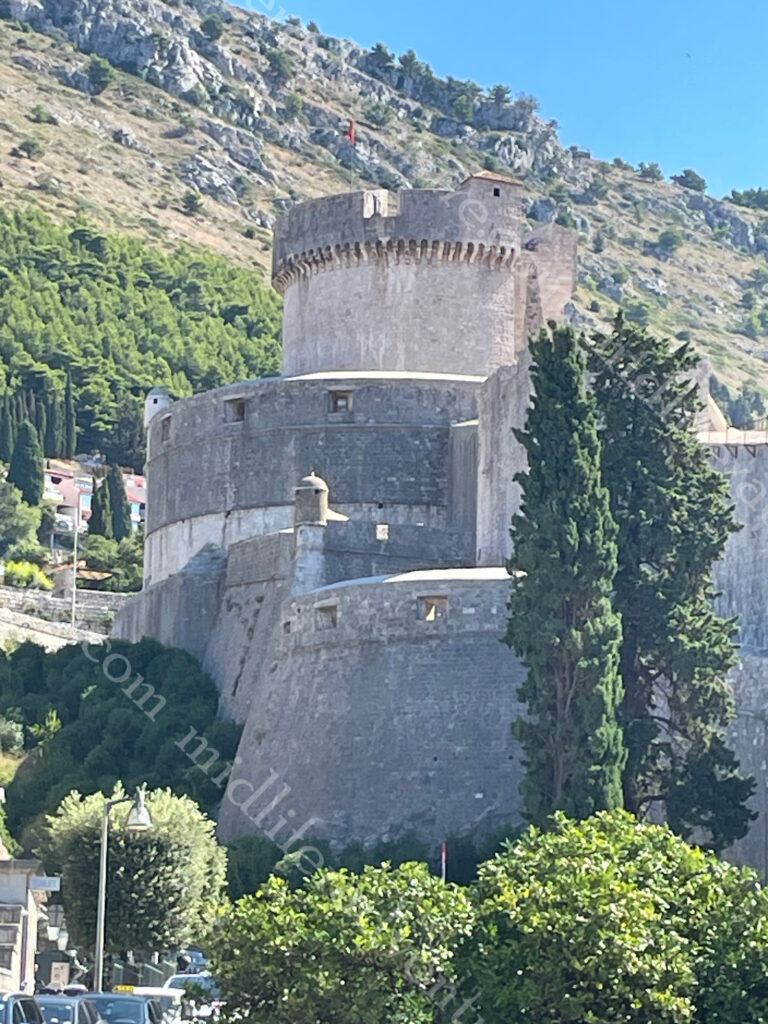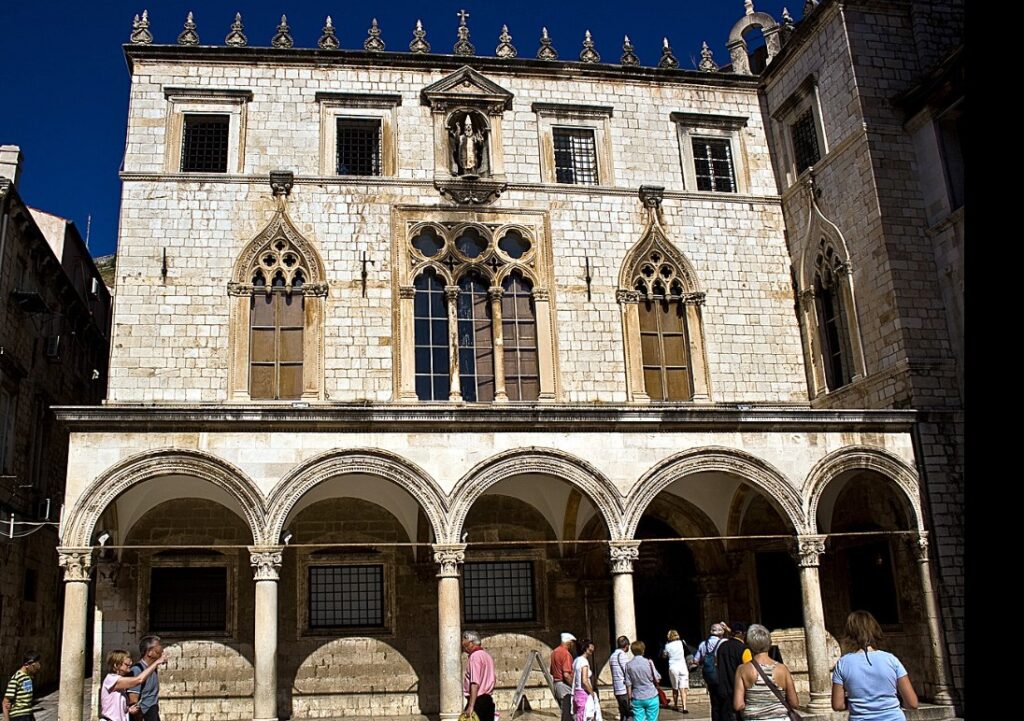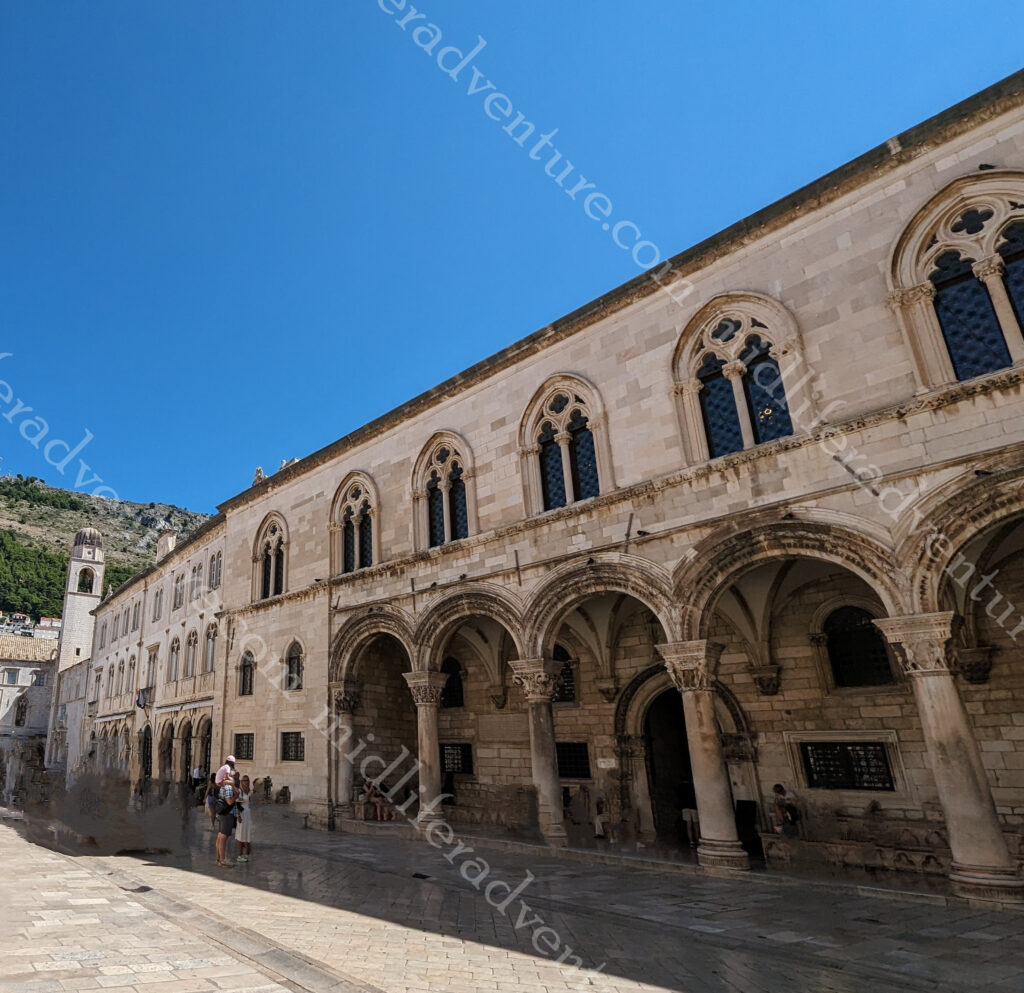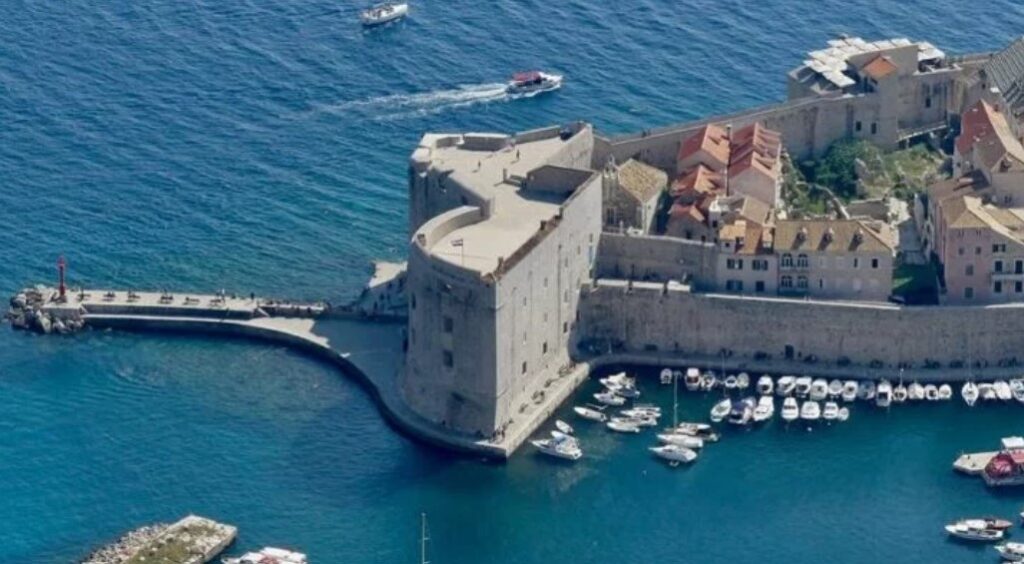Dubrovnik is basically the most famous Game of Thrones (GoT) filming destination on the planet. It was the filming location for the city of Westeros, Kings Landing. Within the walls of Old Town there were many GoT scenes shot. And today you can barely walk the streets without crashing into a GoT tour, shop, memorabilia outlet or sign highlighting how it related to the show. Suffice to say, that almost everything you see or that I will mention in the following is related in some way shape or form to the show.





Our accommodation (thankfully) was out of the craziness that is the old town. We were down on the water, a few kilometers away near the port. The setting was stunning and at least (while we did not know it at the time) we were away from the insanity. We arrived after 8pm and headed out for a lovely meal by the water, vowing to brave the tourist sights the next morning.
Our first introduction to what was to follow was the slow walk that we decided to take to Old Town (rather than catch the local bus). And this introduction was boat load after boat load of party boats stocking up on their quota of tourists for the day trips. The waterfront was packed with boats, each jamming 50+ people per boat and the bigger ones doing way more. And of course there is the daily cruise ships



Dubrovnik Old Town is known as one of the world’s finest and most perfectly preserved medieval cities in the world. For centuries it rivalled Venice as a major trading port. It was built between the 11th and 17th centuries, affording protection to the main entry gate.
The main attractions within old town include the city walls (which you can walk around (for 35 euros a head) this will include towers, walls and defences. Inside the city proper are the clock and bell tower, churches (Sveti Vlaho, Saint Saviour and the Cathedral), monasteries (Dominican and Franciscan), squares (Stradun, Placa, Lužaand and Gunduliceva), and the GoT favourite the Jesuit Stairs.





Having navigated past the harbour we kept walking towards the old town figuring we would see some cool stuff along the way. The first sight we came across was the Lovrijenac Fortress. This is a 16th Century Fortress with 12 metre thick Fortress walls. Over the centuries the fortress played a pivotal role in the defence of Dubrovnik.



This and the Bokar Fortress (opposite side of the inlet) create a fairly imposing landing point for any old-time invading force. Bokar Fortress was built in the 15th century to defend the town’s main entrance. It is the round lump that hangs off the end of old town just to the side of the main entry gate. Currently, in its interior, there are several cannons on display as well as a small precious stones (lapidary) collection.




Pile Gate is the main entrance to Dubrovnik City, and is one of only two entrances to the city. We were here relatively early in the morning and it was already seriously busy, with bodies all over the place and hellish tour groups taking up all the available space.


As you pass through the Pile Gate you are met with two imposing buildings and a fountain. To the left if the Franciscan Monastery and to the right is the St Claire Convent with the Onofrio’s fountain directly in front. The other thing you are met with is a wall of humanity. Everyone gets through the gates and stops to take pictures. As we were here early it was fairly manageable but by the time we were ready to leave this place was a debacle.




Between the two runs the Stradun (main street) which connects the western and eastern entrances to the city. It was created at the end of the 9th century and was rebuilt after an earthquake in 1667. At the beginning and end of Stradun, there are two fountains (Big and Small Onofrio’s Fountain) and two bell towers (City bell tower and the bell tower of the Franciscan church and monastery).


Minceta Tower is the highest point in Dubrovnik City and as you would expect, delivers impressive views over the sea and the Old Town.
Locally known as Tvrđava Minčeta, the tower was built in 1319.


Palace Sponza was built in the 16th century and has been used as the customs house, armoury, treasury, bank and school.
The Rector’s Palace or Knežev dvor used to serve as the seat of the Rector between the 14th century and 1808. Originally it was a site of a defence building in the early Middle Ages. It was destroyed by a fire in 1435 and the city-state decided to build a new palace.


Sveti Ivan tower was built in the 14th century on the south side of old town. On its ground floor there is an aquarium, and on the 1st and 2nd floor there is a Maritime Museum.
Lokrum Island is located just off the Dubrovnik coast. According to legend Richard the Lion-Heart was cast ashore here after being shipwrecked in 1192 while returning from the Crusades. The vow he made to build a church on the spot where he came ashore should he be saved was kept at least in part. Although he came ashore in Lokrum, at the request of the people of Dubrovnik, he agreed to have the church built in the city itself.
At its center is a medieval Benedictine monastery complex that’s surrounded by botanical gardens planted with exotic trees, flowers, and bushes. Inside the Visitors Centre on Lokrum Island is a small exhibition dedicated to GoT and it is the final resting place of the original Iron Throne.







Located near Gundulic Square in the centre of Dubrovnik Old Town the Jesuit Staircase and St Dominika Street are the two most popular areas in the whole of old town. This is the area where one of the most famous GoT scenes were filmed (Cersei’s infamous walk of shame).




We were totally over the crowds and the people and were on our way out of old town by 11am. On our way out the bedlam that we saw on the way in was multiplied by about 5 times. The lines were longer, the crowds were denser and the tempers were shorter.
Dubrovnik is an absolutely lovely city to visit. Just don’t do it in peak season. July and August are hellish and should be avoided at all costs. Don’t get me wrong, you really want to come here, but the peak-season crowds make this place unbearable.